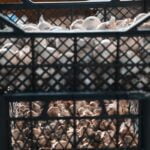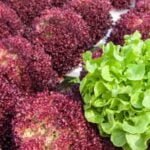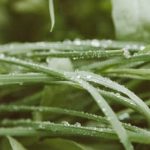Straw is a popular mulching material for vegetable gardens due to its numerous benefits and versatility. In this article, we will explore the advantages of using straw as mulch in vegetable gardens and discuss important factors to consider before incorporating it into your gardening routine. We will also provide step-by-step instructions on how to prepare and apply straw mulch, as well as tips for managing and maintaining it throughout the growing season.
One of the key reasons why straw is favored by many gardeners is its ability to improve moisture retention in the soil. By creating a protective barrier between the soil and the environment, straw mulch helps to prevent evaporation and reduce water loss. This can be especially beneficial in areas with hot climates or limited water resources, as it allows plants to access moisture for longer periods between watering.
Additionally, straw mulch acts as an insulator for root systems, helping to maintain more stable soil temperatures. This is particularly advantageous in regions with unpredictable weather patterns or extreme temperatures. The insulation provided by straw mulch can protect plant roots from heat stress during scorching summers and shield them from cold snaps during winter.
Furthermore, straw mulch assists in suppressing weed growth in vegetable gardens. By blocking sunlight exposure to weed seeds beneath the surface and hindering their germination process, straw serves as a natural weed deterrent. This reduces competition for nutrients and resources among plants, allowing them to thrive without the interference of invasive weeds.
Lastly, straw mulch enhances soil fertility by breaking down over time and adding organic matter back into the soil. As the straw decomposes, it releases essential nutrients that enrich the soil, promoting healthier plant growth and higher yields. This makes it a sustainable choice for gardeners looking to improve their soil’s nutrient content without relying heavily on synthetic fertilizers.
In the following sections of this article, we will delve deeper into each benefit outlined above and discuss important considerations related to using straw mulch in vegetable gardens. Whether you are a seasoned gardener looking to optimize your mulching practices or a beginner seeking guidance on mulching options, this article will equip you with the knowledge needed to make an informed decision regarding the use of straw in your vegetable garden.
Understanding the Benefits of Straw Mulch in Vegetable Gardens
Improved Moisture Retention: How Straw Mulch Helps to Retain Water in the Soil
One of the key benefits of using straw mulch in vegetable gardens is its ability to improve moisture retention in the soil. When applied correctly, straw mulch acts as a protective barrier, reducing evaporation and helping to keep the soil consistently moist. This is especially important during hot and dry periods when water can quickly evaporate from the soil surface.
Straw mulch creates a microclimate by preventing direct contact between the soil and the air, which helps to slow down moisture loss. The layer of mulch also reduces erosion caused by rainwater, allowing water to penetrate into the soil more efficiently. Additionally, straw mulch can absorb and hold onto water, releasing it slowly over time for the plants’ roots to access.
To maximize the benefits of improved moisture retention, it is essential to apply straw mulch correctly. A depth of around 2-4 inches is recommended for vegetable gardens. This thickness provides an adequate layer of insulation while still allowing air and water movement within the soil.
Maintaining Soil Temperature: How Straw Mulch Acts as an Insulator for Root Systems
Another advantage of using straw mulch in vegetable gardens is its ability to maintain consistent soil temperature throughout the growing season. The layer of straw acts as an insulator, protecting the roots from extreme heat or cold temperatures.
During hot summer months, straw mulch keeps the soil cool by shading it from direct sunlight and reducing temperature fluctuations. This helps prevent stress on plants’ root systems and minimizes water loss through evaporation. In cooler climates or during colder seasons, straw mulch provides insulation that helps retain heat in the soil, ensuring that root systems remain warm enough for optimal plant growth.
By keeping a stable temperature range in the root zone, straw mulch creates favorable conditions for vegetables to thrive. However, it is important to monitor soil temperature regularly, as excessive mulch thickness or improper ventilation can lead to overly cool or wet conditions.
Weed Suppression: Exploring How Straw Mulch Helps to Reduce Weed Growth
Weed suppression is another significant benefit provided by straw mulch in vegetable gardens. The layer of straw acts as a physical barrier, preventing weed seeds from reaching the soil surface where they typically germinate and grow. This significantly reduces the amount of time spent on weeding and allows gardeners to focus their efforts on tending to their vegetable plants.
Straw mulch also inhibits weed growth by reducing the amount of sunlight that reaches the soil. Weeds need direct sunlight to photosynthesize and grow, so by shading the soil surface, straw mulch limits the available light for weed seedlings. Additionally, some types of straw may have allelopathic effects, releasing natural compounds that inhibit weed seed germination and growth.
To effectively suppress weeds with straw mulch, it is crucial to apply a thick enough layer to block sunlight and prevent weed seeds from reaching the soil. Regular inspection of the garden bed and removal of any weeds that manage to penetrate through the mulch should also be practiced to maintain a clean growing environment for vegetables.
Factors to Consider Before Using Straw Mulch in Vegetable Gardens
Before deciding to use straw mulch in your vegetable garden, there are several important factors that you should consider. These factors will help you determine whether straw mulch is suitable for your garden’s specific needs and conditions.
One crucial factor to assess before using straw mulch is the drainage of your soil. While straw mulch can help retain moisture, it can also hinder water drainage if your soil does not drain well naturally. Before applying straw mulch, make sure to evaluate the drainage conditions of your garden. If you have slow-draining or compacted soil, it may be better to consider alternative mulching options that will not impede soil drainage.
Another factor to consider is the impact of straw mulch on soil pH levels. Straw has a tendency to be slightly acidic, and depending on the pH balance of your soil, this can affect the overall pH levels. It is recommended to test the pH of your soil before applying straw mulch and make necessary adjustments accordingly. Additionally, regularly monitoring the pH levels throughout the growing season will help ensure optimal conditions for your vegetable plants.
Furthermore, it is important to select the right type of straw for your vegetable garden. The optimal type of straw is one that is clean and free from weed seeds and other contaminants. Wheat and barley straw are commonly used in vegetable gardens due to their availability and ability to break down quickly. However, it is essential to source high-quality straw from reputable suppliers to avoid introducing harmful pests or diseases into your garden.
Considering potential risks associated with straw mulch is also crucial. While straw is generally a safe material for gardening purposes, it can attract certain pests like slugs or snails that may feed on plant leaves or fruits.
Additionally, if you live in an area prone to fungal diseases such as powdery mildew or botrytis blight, using a moist organic material like straw mulch may promote their growth. It is important to stay vigilant and regularly inspect your garden for any signs of pests or diseases when using straw mulch.
Taking these factors into consideration will help you make an informed decision on whether straw mulch is suitable for your vegetable garden. By assessing the drainage conditions, soil pH, straw quality, and potential risks associated with straw mulch, you can determine if it is the right choice for your specific garden needs.
Preparation and Application of Straw Mulch in Vegetable Gardens
Preparing and applying straw mulch in vegetable gardens is a crucial step to ensure its effectiveness in improving plant growth and suppressing weeds. To properly prepare the garden bed for straw mulching, it is important to remove any existing weeds and debris. This will help create a clean and healthy environment for the vegetable plants.
Once the garden bed is cleared, determining the ideal thickness of straw mulch is essential. A layer thickness of around 2-4 inches is generally recommended for vegetable gardens. This provides adequate coverage without smothering the plants or suffocating their roots.
When applying straw mulch around vegetable plants, it is important to maintain proper spacing to prevent overcrowding and allow air circulation. Care should also be taken to avoid direct contact between the mulch and the stems or leaves of the plants, as this can potentially promote disease development.
Watering and supplemental fertilization are also crucial aspects of managing straw mulch in vegetable gardens. It is important to address the moisture requirements of both the plants and the mulch by watering deeply but infrequently. This helps promote deep root growth and reduces weed germination. In terms of fertilization, incorporating organic matter into the soil before applying straw mulch can serve as a source of nutrients for the plants as they grow.
Proper preparation and application of straw mulch in vegetable gardens are key factors in ensuring its effectiveness in enhancing plant growth while minimizing weed growth. By following these steps, gardeners can create an optimal environment for their vegetables to thrive.
| Preparation Steps | Considerations |
|---|---|
| Removing existing weeds and debris | Clean garden bed prior to mulching |
| Determining ideal thickness | 2-4 inches for adequate coverage |
| Maintaining proper spacing and coverage | Avoid direct contact with plant parts |
| Watering and supplemental fertilization | Addressing moisture and nutrient requirements |
Managing and Maintaining Straw Mulch in Vegetable Gardens
Regular Inspection and Weed Control
Once straw mulch has been applied to the vegetable garden, it is important to regularly inspect the garden bed for any signs of weed growth. Weeds can still find their way through the mulch, so it is essential to promptly remove them to prevent competition for nutrients and water with your vegetable plants. Hand-pulling weeds is generally sufficient in smaller gardens, but larger gardens may benefit from using a hoe or cultivating tool to remove weeds more efficiently.
Maintaining Proper Moisture Levels
One of the key advantages of using straw mulch is its ability to retain moisture in the soil. However, it is important to monitor the moisture levels under the mulch and ensure that plants are receiving adequate watering. Straw mulch can sometimes create a barrier that prevents rainwater or irrigation from reaching the soil surface effectively.
To overcome this issue, gently lift up the straw layer and check if the soil beneath is moist. If it feels dry, give your garden a good soaking.
Replenishing Straw Mulch
Over time, straw mulch will break down and decompose. This means that you will need to replenish it periodically to maintain an optimal thickness for effective weed suppression and moisture retention. The frequency of replenishing will depend on factors such as climate and decomposition rate. Typically, adding a new layer of straw mulch once or twice during each growing season should be sufficient.
Composting Spent Straw Mulch
After each growing season, you may have spent straw mulch that needs to be removed from your vegetable garden beds. Instead of discarding it as waste, consider composting it for future use as natural fertilizer. Add the used straw along with other compostable materials such as grass clippings and vegetable scraps into a compost pile or bin. Over time, the materials will decompose and transform into nutrient-rich compost that can be used to improve soil fertility in your garden.
By incorporating these strategies for managing and maintaining straw mulch in your vegetable garden, you can maximize the benefits of this mulching material and promote healthy plant growth. Regular inspection and weed control, maintaining proper moisture levels, replenishing straw mulch when necessary, and composting spent straw will help ensure that your vegetable garden thrives with the use of straw mulch.
Alternative Mulching Options for Vegetable Gardens
When it comes to mulching your vegetable garden, straw is not your only option. There are a variety of alternative mulch materials that can provide similar benefits to straw mulch. Consider the following organic mulch alternatives when deciding which material to use in your vegetable garden:
- Hay: Similar to straw, hay is an organic material that can help retain moisture, suppress weeds, and improve soil fertility. However, be cautious when using hay as it may contain seeds that can sprout and become unwanted weeds in your garden.
- Wood Chips: Wood chips are a popular choice for mulching vegetable gardens because they break down slowly and add organic matter to the soil over time. They also help retain moisture and suppress weeds. However, avoid using fresh wood chips since they can deplete nitrogen from the soil as they decompose.
- Leaves: Fallen leaves can be a great free source of mulch for your vegetable garden. They help retain moisture, suppress weeds, and improve soil structure as they break down over time. Shredded leaves work best as mulch since they will decompose faster than whole leaves.
Alternatively, if you prefer synthetic options or are looking for more durable mulch materials, consider the following non-organic alternatives:
- Plastic Mulch: Plastic mulch is effective at retaining moisture, suppressing weeds, and warming up the soil in early spring. It comes in various colors to accommodate different crop needs and can be reused for multiple seasons with proper care.
- Landscape Fabric: Landscape fabric is a permeable material that allows water and air to penetrate but keeps weeds from growing through it. It helps retain moisture in the soil and provides insulation for root systems.
When choosing an alternative mulch option for your vegetable garden, it’s important to consider factors such as availability, cost-effectiveness, environmental impact, and specific needs of your plants. Experimenting with different mulching materials may help you determine the best option for your garden’s unique conditions and requirements.
Success Stories and Tips from Experienced Gardeners
Gardeners who have successfully used straw mulch in their vegetable gardens have shared their experiences and valuable tips that can help others achieve outstanding results. These success stories highlight the benefits of using straw mulch and offer practical advice for its application and maintenance.
One common success story revolves around improved moisture retention. Many gardeners have found that straw mulch effectively helps retain water in the soil, reducing the need for frequent watering. They emphasize the importance of adequately watering the soil before applying the straw mulch to enhance its moisture-retaining capabilities. Additionally, these experienced gardeners suggest periodically checking soil moisture levels and adjusting watering as necessary to ensure proper hydration for plant roots.
Another benefit highlighted by experienced gardeners is weed suppression. Straw mulch acts as a natural barrier, preventing sunlight from reaching weed seeds and inhibiting their growth. Gardeners advise thoroughly clearing the garden bed of existing weeds and debris before applying straw mulch to maximize its weed-suppressing properties. Regular inspection of the garden bed is recommended to promptly remove any emerging weeds.
Furthermore, experienced gardeners stress the importance of maintaining proper moisture levels when using straw mulch. While it retains water well, it is crucial to monitor soil moisture beneath the mulch layer to prevent excessive dryness or saturation. These gardeners advise occasional gentle watering directly onto the soil surface, ensuring that water reaches plant roots while avoiding excessive runoff.
To maintain optimal thickness and effectiveness of straw mulch throughout the growing season, replenishment may be necessary. Experienced gardeners suggest adding more straw as needed to maintain a consistent layer depth, usually around 2-4 inches.
Finally, after each growing season, spent straw mulch can be composted to further enrich the soil with organic matter. This recycling process not only promotes sustainability but also reduces costs associated with purchasing new mulching materials for subsequent seasons.
By listening to these success stories and following these tips from experienced gardeners, vegetable gardeners can make informed decisions about using straw mulch in their own gardens.
Conclusion
In conclusion, the use of straw mulch in vegetable gardens can provide numerous benefits for your plants and soil. The improved moisture retention that comes with using straw mulch helps to ensure that your vegetable plants have a steady supply of water throughout the growing season. Additionally, straw mulch acts as an insulator for root systems, helping to maintain soil temperature and protect delicate roots from extreme heat or cold.
Furthermore, weed suppression is another key advantage of using straw mulch. By covering the soil with a thick layer of straw, you can greatly reduce the growth of weeds in your garden beds. This not only saves time and effort in weed control but also prevents competition for nutrients and water among your vegetable plants.
Moreover, the breakdown of straw over time enhances soil fertility by adding organic matter and improving nutrient content. As the straw decomposes, it releases valuable nutrients into the soil that are essential for plant growth and development. This natural process can help to create a healthier and more productive environment for your vegetable garden.
Before deciding to use straw mulch in your vegetable garden, there are several factors you should consider. Firstly, assess your garden’s drainage conditions to determine if straw mulch is suitable. Some soils may be prone to waterlogging when covered with excessive amounts of mulch. Additionally, consider how using straw mulch may impact soil pH levels and adjust accordingly if necessary.
Furthermore, selecting the right type of straw is crucial for optimal results. Choose a high-quality straw that is free from pesticides or chemicals that may harm your plants or contaminate your produce. Lastly, be aware of potential pest and disease risks associated with using straw mulch and take appropriate measures to manage them.
Frequently Asked Questions
What vegetables should I put straw around?
Straw is commonly used as a mulch in vegetable gardens, and there are certain vegetables that benefit from having straw around them. One example is tomatoes, which thrive when straw is placed around their base. The straw helps to retain moisture in the soil, prevents weeds from growing around the plants, and acts as a barrier between the fruit and the soil, reducing the risk of diseases.
Other vegetables that benefit from straw mulching include peppers, cucumbers, squash, melons, and eggplants. It’s important to note that not all vegetables require straw mulching, so it’s best to research the specific needs of each plant before applying straw.
When should I put straw in my garden?
The timing for putting straw in your garden depends on what you are trying to achieve with this practice. If you want to prevent weeds from growing in your garden beds or wish to conserve moisture during hot summer months, it’s ideal to apply straw mulch at the beginning of the growing season before weeds have a chance to take hold. This allows the straw to establish itself as a protective layer early on.
On the other hand, if you want to provide winter protection for your plants or insulate them against temperature fluctuations during colder months, it’s recommended to add straw mulch in late fall or early winter when plants start going dormant. Timing is crucial when using straw as a mulch since it can affect its effectiveness.
Is straw or mulch better for vegetable garden?
Both straw and regular organic mulch have their advantages and can be beneficial for a vegetable garden; however, they serve slightly different purposes. Straw has excellent water retention qualities and helps keep the soil moist while reducing weed growth effectively due to its ability to form a physical barrier between plants and soil. On the other hand, organic mulches like wood chips or compost provide more long-term benefits by improving soil structure and fertility as they break down over time.
They also help regulate soil temperatures better than straw during extreme weather conditions such as heatwaves or cold snaps. It’s worth noting that some gardeners prefer straw due to its lighter weight, easier application, and affordability compared to other mulch options. Ultimately, the choice between straw and mulch for your vegetable garden depends on your specific needs and preferences, as well as the specific plants you are growing.

If you’re looking to get into vegetable gardening, or are just looking for some tips on how to make your current garden better, then you’ve come to the right place! My name is Ethel and I have been gardening for years. In this blog, I’m going to share with you some of my best tips on how to create a successful vegetable garden.





